Don't wanna be here? Send us removal request.
Text
Time is Money
3. Metropolis present a dystopic, unequal society in which technology is used to control the masses. Pick a scene from the movie and compare it to a technology you observe in Berlin.
This scene speaks about time and the way in which it has control over people's lives. Fredrer is seen struggling to change the time. After struggling, the clock leaves him exhausted and conquered. At one point Fredrer is placed on the clock as if he was being crucified by the clock. The whole reason this clock is important to the city is because of the low-class workers who the whole city depends on.
This is extremely similar to the clock exhibit that we saw today in the communication museum. It showed a variety of different clocks that represented different time zones. The need for these time zone clocks was a result of advanced communication technologies that made global communication faster and more important than ever before.
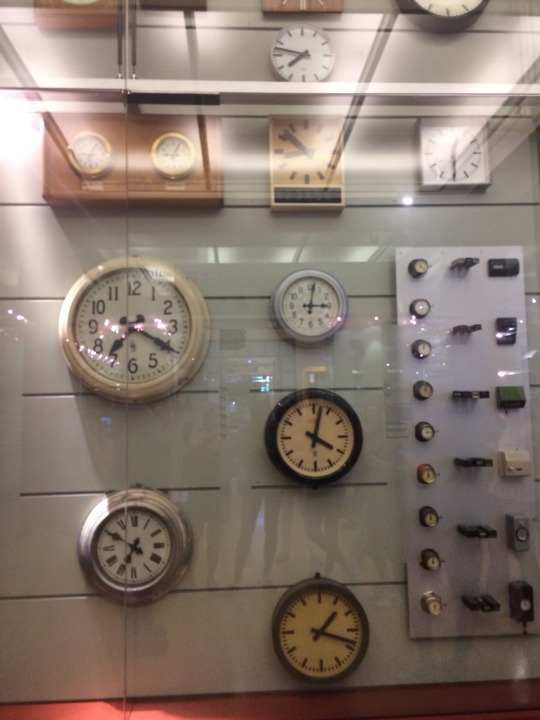
However, with communication now being so widespread, there is a need to understand and know what time of day it is around the world. Thus the global clocks were brought into use. This relates to the scene because, after the advancement of communication technology, people are now dictated by the time more than ever before.
This continues to be a problem as technology advances. With smartphones and high-speed computers, things can be done faster than ever before. This also means that expectations are higher than ever before. Time can become people's entire lives, consumed by due dates and requirements.
youtube
4 notes
·
View notes
Photo



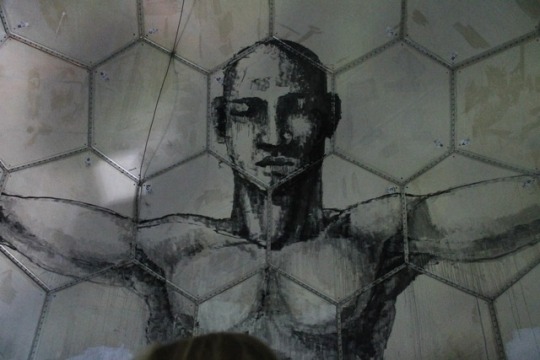


Teufelsberg
3 notes
·
View notes
Text
Freedom and Community
Prompt 3 (extended): At Teufelsberg this week you will see a huge amount of graffiti. It's a cultural phenomenon here - highly skilled artists have been allowed to paint the walls of this defunct spy station. Some murals have lasted years, while others are painted over from one week to the next. As Ledingham tells us, “Public relations is best defined and practiced as the active attempt to restore and maintain a sense of community.” How is this graffiti a function of community building/maintenance? How might this space be different in the U.S.? Would the owners of this property or the federal government be likely to allow this long-term graffiti haven to continue untouched by anyone who isn't part of the community? Post a selection of murals to illustrate your post.
This place is beyond beautiful and the people that I saw there matched the scenery. Everyone was extremely different looking, but there was a sense of acceptance that didn’t have to be vocally acknowledged. Graffiti in particular also allows an element of anonymity because of the legal restrictions on graffiti. The majority of the art pieces that we saw at this abandoned spy station were politically charged. I believe that art is a way for people to express themselves without having to be physical or vocal. The art is so packed with information that it speaks for itself. By allowing artists to come graffiti on these historical walls creates a strong bond of trust and community. For many of the major works here, the graffiti artists will respect the significance of the piece and paint elsewhere. Because of the strict laws against graffiti Teufelsberg provides somewhat of a safe space for artists to express themselves.
Here are some of the political pieces that I saw. I will not caption them because I believe that interpretation of pieces like this should be left to the eye of the beholder.





I cannot see a place like this happening in the U.S., especially with the politically charged art that covers the walls. The U.S. (especially in the current political climate) is generally considered to be more close minded to things like this compared to Europeans who are more likely to be accepting. Our guide explained that every so often they had to get a contract renewed to keep the space the way it is. In the U.S. I don’t see this contract being renewed. They might argue to the artists that there are other ways of artistic expression than graffiti, which is largely considered to be a form of vandalism.
Another option that would be likely in the U.S. is that the area could still be used as a “protected” painting area; however, the artists would be monitored and regulated on what they were painting. For example, if one of the monsters which would likely be of the police force were to see an artist creating a black lives matter piece, they would likely be asked to stop painting and leave.
In Germany and Europe in general, there is a greater sense of acceptance of all different kinds of people and it is perfectly illustrated in the paintings and art found at Teufelsberg. No matter your political background, class, race, sexual orientation, you DESERVE TO BE HEARD and listened to. Unfortunately, in the U.S. this is not the popular way of thinking. I believe that allowing places like this not only creates a community of artists. It also allows sub-communities to interact with each other in a safe place.
Here is a video that talks about the importance of political artwork:
https://www.youtube.com/watch?v=RfXad3HVox4
2 notes
·
View notes
Text
Gender bias isn’t the only social practice surrounding automobiles
2. Find an example at Autostadt that illustrates a quote from the Carrabine and Longhurst reading. How is VW making meaning about automotive consumption? What appeals do they make to youth culture – or not?
“the point is that other structuring dimensions of social practice (like age, class and ethnicity), might be more relevant than an exclusive preoccupation with gender.” (Carrabine and Longhurst 184).
After visiting the Autostadt, this quote became extremely relevant. Usually, when people think about luxury car advertising and consumption they tend to think of men (particularly rich men) being the target audience. However, by taking a closer look at recent studies and trends, it becomes clear that the target audiences have less to do with gender than they so about things like age, class, and ethnicity. I really saw this in the way that almost all of the advertising pieces at the autostadt targeted well off young adults. Not once did I see an advertisement with elderly people featured in it and when you did see older men they were rich and white a.k.a those who are able to afford the car.
One example of this was a commercial that I watched in the Audi exhibit. The commercial was a short narrative about a young nice looking guy. The commercial goes on that he has a beautiful girl, a beautiful house, a beautiful car blah blah blah, and essentially he has a perfect life and his Audi is the icing on the cake. From a general perspective, Audi advertises a certain happiness that comes with driving an Audi, a technique that we see used in advertisements all the time.

Also, one of the main ideals of VW is that no matter a Bugatti or a VW bug, the cars will be assembled in the same way with the same care. However, I found this true only to an extent. The tour guide contradicted herself after explaining the hundreds of extra hours that go into making the Bugatti.
Volks Wagon is taking auto consumption to a new level with their autostadt park. This experience of buying a car there is unique and personalized. You stay in the Ritz on the site then you will go the next day to pick up your car from the tower which is basically a giant car vending machine. However, while you are waiting for your car you can visit the many car exhibitions that scatter the site with their beautiful architecture. The park also offers the opportunity for visitors to do a terrain course to test out their driving skills and abilities.
VW really targeted youth culture by using modern technology and sleek designs, but more importantly, they did this by advertising the freedom that having an automobile gave you. With that freedom comes happiness and a plethora of other things. It also offers their automobiles up as somewhat of a status symbol— if you have one of these cars people will be jealous of you and more attracted to you.

2 notes
·
View notes
Text
?????“Born to be Wurst"?????
Prompt 2: Capture an advertisement that you think would be ineffective in the U.S. Tell me why it would be ineffective, and then describe how you might do it differently for a U.S. market. Post a photo of the advertisement so that your classmates and I can see what you’re referring to.

While riding the subways here in Berlin, I have seen this advertisement several times. The reason that I notice it each time is because, in my opinion, the advertisement is totally bazaar as well as in another language.
The top of the ad says “born to be Wurst", which I guess is a play on the song born to be wild. If that is what the phrase is referencing, it doesn’t make very much sense.. even if everything was in English I think that it would be a stretch to use that phrase in that context. This may or may not be explained the words below “born to be wurst,” however, it is in German which makes the ad ineffective for a non-german speaking audience.
It also would be ineffective for a US audience simply because of the product. The US does not mass consume sausage as the people here Germany do. For the next part of the question it might help to imagine the product as being something like a Slim Jim.
If I were to make this ad usable for the US I would make it very clear that the ad is advertising a chance to win concert tickets. I would also dress what I assume to be the dancing sausage in obvious festival gear and he would not be playing an instrument instead he may be dancing at a stage. I would also put a picture of the band or festival logo on the ad as well to get the attention of those who might not usually buy the product but might be interested because I the prize incentives. Lastly, I would have to translate the words into English, but I would try to make the ad as visual as possible so language barriers wouldn’t even be a problem in the first place.
4 notes
·
View notes
Photo



Chrome Bugatti
6 notes
·
View notes
Video
tumblr
Prompt 1: How can cultural stereotypes hinder cross-cultural or international public relations? How is culture a factor in managing international PR? Find a person, not from the U.S. (on the street or at a restaurant... somewhere outside the hotel) and ask them for one stereotype about people from the U.S.; ask their permission to audio or video record them answering the question - post the audio/video here.
So for my video, we stopped a group of guys, but only a few were willing to speak. They explained to us before the recording that it was a bit uncomfortable to ask such questions. I also believe that this discomfort led them to give us answers that were not super great or honest. However, I noticed that my interviewee as well as others that I watched first talked about our American food (burgers and fast food) then they mentioned the obvious.. Donald Trump (with a negative connotation).
I also picked up on other cues like the fact that every time we ask a group of people a question they either scowl at us, talk to each other in German and then laugh at us, or both. I also feel like there is a stereotype that Americans feel that they can do whatever they want in other countries. Unfortunately, through these uncomfortable experiences, we may or may not have perpetuated these stereotypes.
3 notes
·
View notes
Text
Sports! ..and govt
1. As we have discussed, there are many sciences and technologies involved in athletics. These sciences and technologies may or may not be communicated for various reasons. Briefly compare what each of the following governmental bodies were trying to communicate about sports science and technology, and to what public(s).- Nazi Reich and Olympia Stadium - Citystate of Berlin and the Füchse handball game, East Germany and the Olympics. Use the Olympia movie, stadium tour, and Dimeo reading to support your posts.
Nazi Reich and Olympia Stadium:
The Nazi Reich used Olympia stadium to communicate not only to Germany but to other nations as well. The architecture was done by Werner March, he always had Hitler's wishes in mind when designing this stadium, thus creating what the tour guide called a classic and conservative stadium. Hitler was against having a modern stadium and was more focused on creating something that looked classic. We also are reminded of this in the movie Olympia, where the whole opening scene is the original Greek games and silhouettes of the gods than then crossfades into what can be assumed to be German Olympic athletes. The structure of the stadium created a powerful presence. Everything from the oversized entrance pillars that reach to the heavens, the large overhanging balcony for Hitler, and the tamed horse statue at the back of the stadium was intentionally built that way to express the total power that the Nazis believed they held.
The Nazi German government also required their athletes to dope, many times without their consent. Doping technology was used by athletes and governments to ensure that the athletes were performing at exceptional levels. Winning the most gold medals was a priority for the Nazi Reich in order to maintain their reputation of total domination in everything from politics to sports.
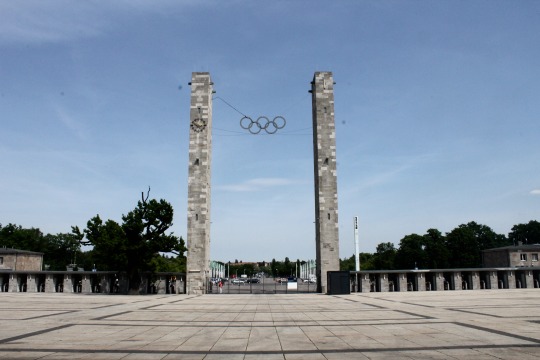
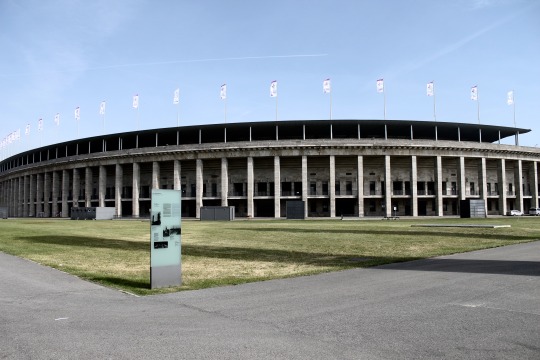
Citystate of Berlin and the Füchse handball game:
The Foxes had to apply with the city of Berlin and create a decent relationship with the government and the people of Berlin in order to be the official Berlin handball team (Berlin Foxes). Many years after the decision the Berlin citizens have kept a lasting relationship with the team by communicating positively and supporting them at all of their games. By endorsing the handball team as the official BERLIN handball team, the government has officially tied itself with that team. The success of the foxes is now incorporated with the reputation of Berlin. However, only to an extent. The pressure on the athletes is only vaguely similar to the athletes competing during the Nazi regime. The main publics concerning this team are the players and workers of the team and the fans that support them, particularly Berliner fans. A lot of times the communication is done ritualistically using technologies that can allow the crowd to get involved. For example, the clappers everyone was given to cheer on the team or the scoreboard (and announcer) that prompted chants for the fans to shout.
East Germany and the Olympics:
Similar to Nazi Germany, East Germany also had issues with extreme propaganda and doping. Due to the strong rivalry with western Germany as well as having the mission to prove that their country was the best, East Germany took extreme measures to make this happen. The doping was semi-successful, East Germany won many gold medals, however many athletes failed doping tests and others remained suspicious. As mentioned in the Dimeo article, a lot of times these athletes did not have a choice in whether they took enhancement drugs.This was a very similar process that Germany had when hitler was in power. The main publics that East Germany needed to reach out to was to its own people to encourage support and to the people of West Germany, to prove they were better.

3 notes
·
View notes
Video
tumblr
Prompt 3: Ask a stranger in Berlin about their favorite type of car or driving activity/experience/memory. Post a short video of this discussion. Find a quote in Featherstone and explain how it relates it to the response of your interviewee. The quote can support the interviewee, disagree with them, or be a mixture of both. Your job is to articulate a connection between the reading and your interviewee's response. NOTE: This will be much easier if you read Featherstone BEFORE you conduct your interview.
“As road traffic deaths and casualties become defined as a public health issue, there are more forceful attempts by experts and various commissions to shift away the responsibility from the individual to the ‘system’" (Featherstone 4).
In this case, we will think of the system as what the government requires for a person to get and keep their driver's license. In South Carolina, a 15-year-old can get a permit and be driving without restrictions at the age of 16. I short, non-intensive test, road test, as well as 6 hours of driving school are required.
Here in Germany, you can only start driving fully alone at the age of 18. The tests are much more comprehensive and require many more practice hours as well as a first aid certification course. To get a better idea of just how complicated the process is to get a German license click the link below:
https://www.cnet.com/roadshow/videos/top-5-differences-between-us-and-german-licenses/
Today, after a day trip to Poland I decided to ask this guy at the bus station what his favorite driving memory was. Before I was able to start filming he asked me “On the bus or in an automobile” obviously I said automobile… He laughs and shakes his head and says "I hate automobiles!"
After doing some research, I now understand why he is so frustrated with the system. However; I think that Germany may be putting itself in a better position by making the driving age higher as well as making the tests more intensive. According to one study, Germany has LESS THAN HALF of car related deaths per year.
The study: http://uk.complex.com/sports/2013/02/germanys-fatal-accident-rate-is-less-than-half-of-ours-despite-driving-at-155-mph
I seriously believe that this is because of how serious they take driving. Maybe America should lower the drinking limits and raise the driving standards?
6 notes
·
View notes
Text
Sachsenhausen
Prompt 3 (extended): We visit Sachsenhausen this week. The holocaust undeniably was a crisis, and created a series of cascading crises for Germany, Europe, and the world over the following months and years. Thinking about the Guth reading, how does Sachsenhausen function as a response to that crisis? How does the organization utilize Sachsenhausen (and museums/memorials like it) to pursue healing, restoration, and a prospective vision for the future with the various publics affected by the holocaust? Make specific connections to both the Guth reading and the ECC (Effective Crisis Comm) reading - again, quotes are a good way to do this.
Sachsenhausen serves as a memorial site for several different tragic events that happened on those grounds. It is a memorial for not only the prisoners that were kept there during the Holocaust, but also the prisoners kept there during the time of Soviet Special camps.
These types of memorials are a prime example of crisis communication in action. The memorial is jam packed with artifacts and educational exhibits that carefully, but effectively explain what had happened during these times, while also refraining from omitting important facts. It is a source that serves to educate visitors and German residence on exactly what happened at these camps and the scale on which these things were done. Not only is it a huge learning tool for those who were not alive during these times, it is also a source of closure for survivors and their families as well as the families of those who did not survive. By having something tangible to look at and interact with, it makes it easier to understand the life that their loved one.
The restoration of this and other camps serves as a statement from Germany that they do not want to erase the past and that they are willing to acknowledge the atrocities that happened during these times. It is also a reminder to not let history repeat itself.
Throughout all of the ECC chapters, a crisis is described as something that often happens quickly and unexpectedly. In the Guth reading, "Ole R. Holsti has defined crises as situations ‘characterized by surprise, high threat to important values, and a short decision time’” This requires people to respond as quick as possible. However, the german’s living around these camps more or less ignored what was happening around them. Thus, Schsemhuasen along with hundreds of other memorials commemorating the same crisis, are using these memorials as a way to acknowledge now what they ignored in that past. This ECC article also makes an important point that crisis communication also serves to reduce as much uncertainty as possible. Even though this came many years after the crisis, the memorials provide more than enough information, context, and closure to reduce uncertainty.
Memorials like these also need to be able to reach a global audience since the Holocaust was very much a global crisis affecting people from almost everywhere. The most obvious way is by offering the information in various different languages, as well as offering tour guides who speak languages other than that of the country you are in. A less obvious way of reaching their global audience is through the tangible objects like statues or interactive exhibits. Language does not have to be a deciding factor when communicating with such audiences.
In conclusion, I would like to say that there is no blog post or assignment that can truly capture the absolute tragedy that struck the world before, during, and even after WWII. These topics deserve to be treated with the utmost respect. My heart goes out to the survivors, those who did not survive, and their families.

2 notes
·
View notes
Text
Working Backwards
Prompt 2: Luke Lalor from AlphaPool Content Marketing is coming to talk with us about his firm and what they do. For this post, you need to take careful notes during Luke's talk so that you can go out this week and find an example of something he discusses. Specifically, you need to identify a concept he discusses, then find an example of that practice (1) done well (BMW), and (2) done poorly (AFRICOM)
Luke Lalor was such a great speaker that was extremely relevant to what we are studying and specifically what I am planning on pursuing as a future career. He is VP of a content marketing firm called AlphaPool.
During his presentation, I asked what kind of strategy he uses to decide what types of media to use when working with different clients and if there was a certain type of media that he used that is more effective than the others.
In summary, he answered my question by saying that it really depended on the client and who their target media was to decide what kind of media platform they would be using.
He then explained his reverse technique with me. He explained that to figure out the answer to my question one has to work backwards by first figuring out who you want your campaign to reach (target audience). Then, the client and firm have to decide on the message that they want to present to that target audience.
An example of this process done well is by BMW. BMW uses various systems of customer and employee communication to better understand their target audiences and their needs. Through these methods, BMW is able to advertise and communicate on an extremely high functional level. The key to their successful campaigns is the positive way in which they are able to communicate internally and externally with customers and employees.
Here is just one of many ways that BMW clearly and successfully communicates their messages:
https://www.bmwgroup.com/en/next100.html

On the other hand, I saw this type of communication done poorly at our AFRICOM visit. (Disclaimer: I know that these people have high-stress respectable jobs; however, I am reporting on what I saw). During our briefing, I noticed that the different groups knew their target groups, however, the message they wanted to get across was not cohesive. Some people talked about how they wanted to use the African Resources while the other was saying African solutions for African problems. Even though that seems like such a simple difference in a slogan, it has a huge effect on the missions, how the Africans view the missions as well as how outsiders understand the missions. I also noticed that the people who spoke were grumbling when their peers were talking (saying things like, “that's not correct”) or they would interrupt the other's speeches. For such a prestigious operation the slack communication practice I saw in the office was not something that I would want to recreate.
3 notes
·
View notes
Text
Compulsory Sterilization
2. At the Museum of Medical History Choose a quote from the Habermas encyclopedia article. Explain in your own words what this quote means. Apply this quote to a health science or technology, from any time period, you observe at the museum. Why does this science or technology need a public sphere to debate and discuss it? How is it an issue of relevance to the quality functioning of a democratic society? (How is this relevant to democratic functionality why do we care) What is a contemporary health technology or science being debated in American public sphere(s)?
“Regulations demanding that certain proceedings be public (Publizitatsvor-Schriften), for example, those providing for open court hearings, are also related to this function of public opinion. The principle of supervision is thus a means of transforming the nature of power, not merely one basis of legitimation exchanged for another” - The Public Sphere: An Encyclopedia Article
…Basically, this quote says that for the function of public opinion to be possible, things need to actually be available to the public. This transition of things that were once private and now the public is also a handoff of power to the public, allowing them to have more know and say in their government. During our visit to the Berlin Medical History Museum, I was drawn to an exhibit piece on the compulsory sterilization of people who were “unfit” for the German super race. This included people who had mental or physical ailments. The term for this type of science is Eugenics. In 1934, Hitler created a law called “Law for the prevention of hereditarily diseased offspring.” This law permitted the sterilization of patients against their will. Which meant that the government now was discussing and attempting to control something that was once a personal choice. In addition to the general discussion, each case had a eugenics court decide the fate of these people.
Going back to the quote at the beginning of this post we can see that these (what are thought of as generally) expected rights in a modern democratic society had faded under Hitler’s rule. Even with the opposition of over 4,000 peoples regarding these sterilization policies, the government still continued with the practice as well as made many of the practices private. So, even though there were government discussions happening, they seemed to be useless under the oppressive Nazi government; thus, this science and the execution of it was detrimental to democratic functionality. Issues like this should obviously be discussed and decided on by public spheres because it is affecting the lives and future lives of thousands of people. By the end of 1939, about 350,000 people were forced into being sterilized. This is obviously a sign of a broken government.
Another similar and touchy topic that we have today is the discussion of abortion: is it legal or not? As well as “when does an infant receive human rights”?
So I know what you’re thinking, “but wait America has such a great democracy we vote for these things”?! I would come back with the reply of “yes you’re right; however, the majority of the people making the decision about what women do with their bodies is old (usually white) men.” Thus, there isn’t a great representation of the public sphere in which the science involves (women with the ability to give birth). Even though the situations are fairly different, it is easy to see similarities in the lack of say the people got versus what they should have gotten in their relative governments.

4 notes
·
View notes
Text
BMW Motorcycle factory
Prompt 1:Capture an image from the portion of the BMW Motorcycle factory where we’re allowed to have photos – anything you like (something cool, obviously). Discuss the concept of communicating/connecting with internal & external stakeholders, and how this tour accomplishes both of those things (refer to the entire tour and to things we learn from the tour guide and the promo videos). Draw specific connections to the Zerfass reading - quotes w/ page numbers are a good way to do this.

During the entire BMW motorbike factory tour, we were constantly reminded of how the company effectively communicates with its workers as well as its consumers.
In the Zerfass reading on global PR, I found a quote that really fits into the BMW model; "Organizations should have core competencies and policies that are valid worldwide, while at the same time their implementation in different parts of the world should appreciate local specialties" (Zerfass 786). While BMW seeks to fill its global expectations of being a reliable global brand, it also seeks to fulfill its customers' local and personal expectations as well.
Communication starts at the internal level mostly between workers and supervisors. Workers communicated with their supervisors if they need more time on break or more breaks in general. The supervisor also communicates with the worker if their work is not up to factory standards. In addition to these things, BMW uses a wellness program called today for tomorrow to make sure that workers are happy and healthy. They physically embody these ideals with things like active rooms, passive rooms, bonuses for innovation ideas, as well as mats for physical health reasons.
All of these things are important because the happier and healthier the worker, the more likely the worker will be to do good work safely and efficiently. The tour guide spoke about these things several times.
The wellness of workers then transfers to the customers because they are getting high-quality parts that have been carefully tested many times. External communication is also happening with the fact that they even offer tours of their manufacturing process. From the moment you walk in the door you enter a clean room full of bikes that you can get on and are immediately offered complimentary water and coffee, this reinforces the idea that they want you to have the best personal experience possible (the BMW bike buying is 100% personalized). In the tour, the guide also explains stockholder stats as well as other consumer benefits. In addition, they communicated on the tour about the various ways that they cut back on emissions. Overall they are constantly communicating various ways that they are the best and you SHOULD want to buy a BMW motorcycle.
4 notes
·
View notes
Video
tumblr
Views: Berlin Edition.
7 notes
·
View notes
Text
1. At the DDR (aka GDR: German Democratic Republic, East Germany) Museum:
Find an example of communication ABOUT a science or technology from the era of the DDR. This is not the museum communicating about sci/tech, but a communication from the time period of the DDR in which the topic of the public communication is a science or technology. What is the topic? What is the medium? (E.g., Waiting for the telephone to ring, as described in an East German pop song).
How was does this example part of daily life in the socialist state of East Germany? How do you think this similar to and/or different from daily life in West Germany, Germany today, or the USA Today?
Focus your attention on the package in the very back of the installation, the package with the trendy young woman pointing a camera at you. To answer this question this is the object of communication that I will use to explain photographing technology and what it meant in the context of the DDR.
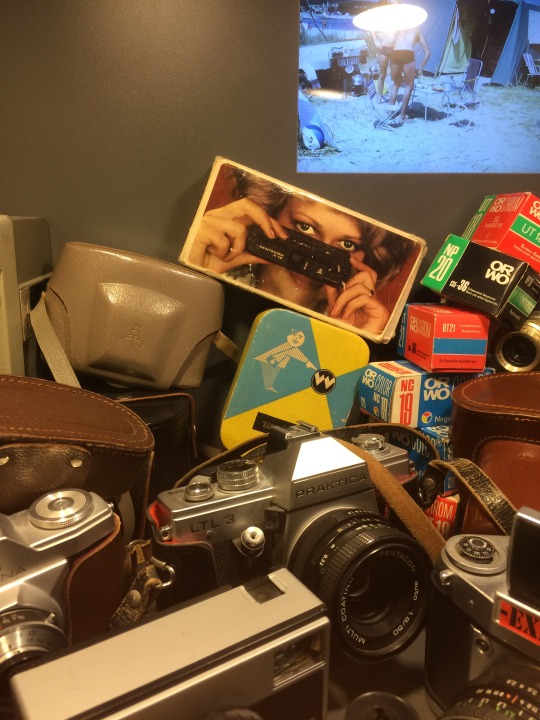
By looking at the packaging, one will immediately realize that the topic of this communication is photographing technology. For its time the advertisement would have been quite modern. The camera compared to other cameras of the time is small and compact something that hadn’t been common in cameras until around this time. The advertisement its self is a colored photograph which echoes this idea of modernity. In addition to these elements, the woman behind the hi-tech camera is half-sensually smiling and seems to be attractive and trendy.
All of these things seem mundane until you consider the context of the communication. The packaging in the context of eastern Germany speaks to the idea that the DDR wanted its people and others to believe that it was just like the other nations, trendy and up to par with modern technology. It also touches on the idea that the DDR allowed the purchase of such cameras this instills the reputation they wanted to convey of a carefree normal lifestyle; one that you wouldn’t mind taking pictures of. Though that is how they wanted others to view daily life in eastern Germany, the world now knows that this was not the case.
In comparison to western berlin, they could have had the same packaging and camera in their stores. The west was a capitalist society always pushing consumer goods. It makes me think that the eastern half wanted to offer these products to prove a point that you can have what they have in the west but it will be even better and easier to get (communist).
Fast forward to the way we communicate technology today and we see similar tactics; however, the ideas behind them are not near as corrupt. Many of these commercials will attempt to convince you that with their product you can have more fun than ever before. For example, this easy self-portrait technology is communicated as so easy that you can have a blast taking selfies and you might have as much fun as the girl in the picture. You and I both know that taking selfies isn’t THAAAT GREAT (Kim k. might beg to differ). However, the advertisement wants to prove you otherwise.

Also another very interesting website that talks about photographs in the DDR can be found in the link below!
https://www.thelocal.de/20140320/east-german-propaganda
5 notes
·
View notes
Photo
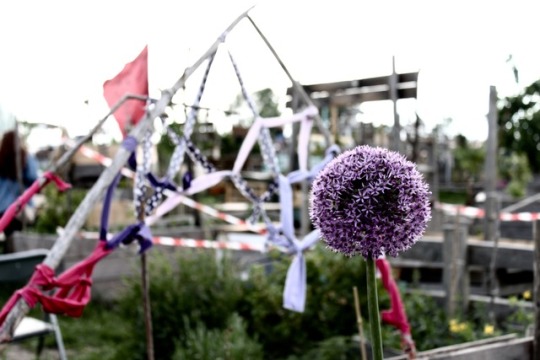

These purple flowers (purple alliums) are everywhere!
10 notes
·
View notes
Video
tumblr
Cultural stereo types Video
3 notes
·
View notes